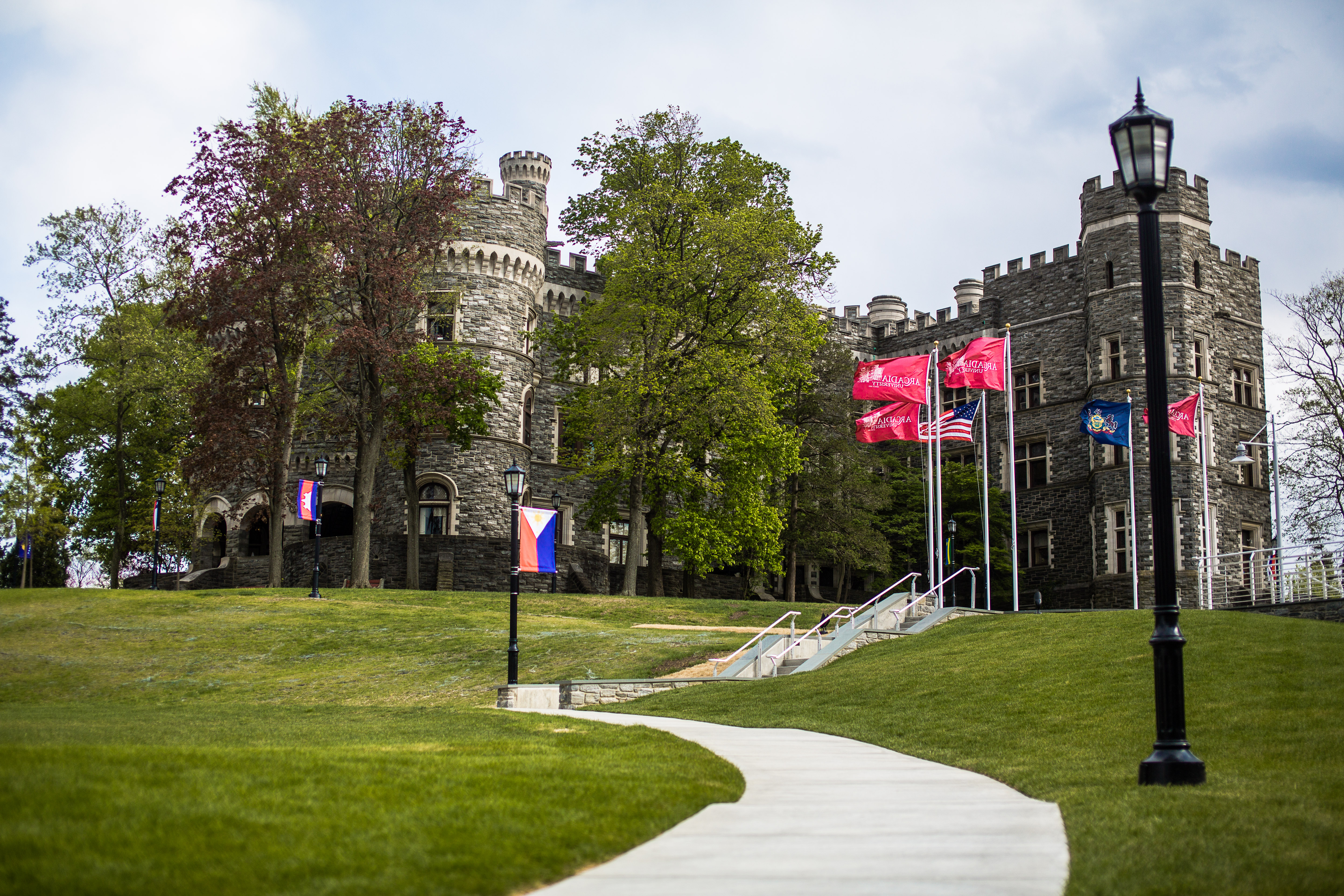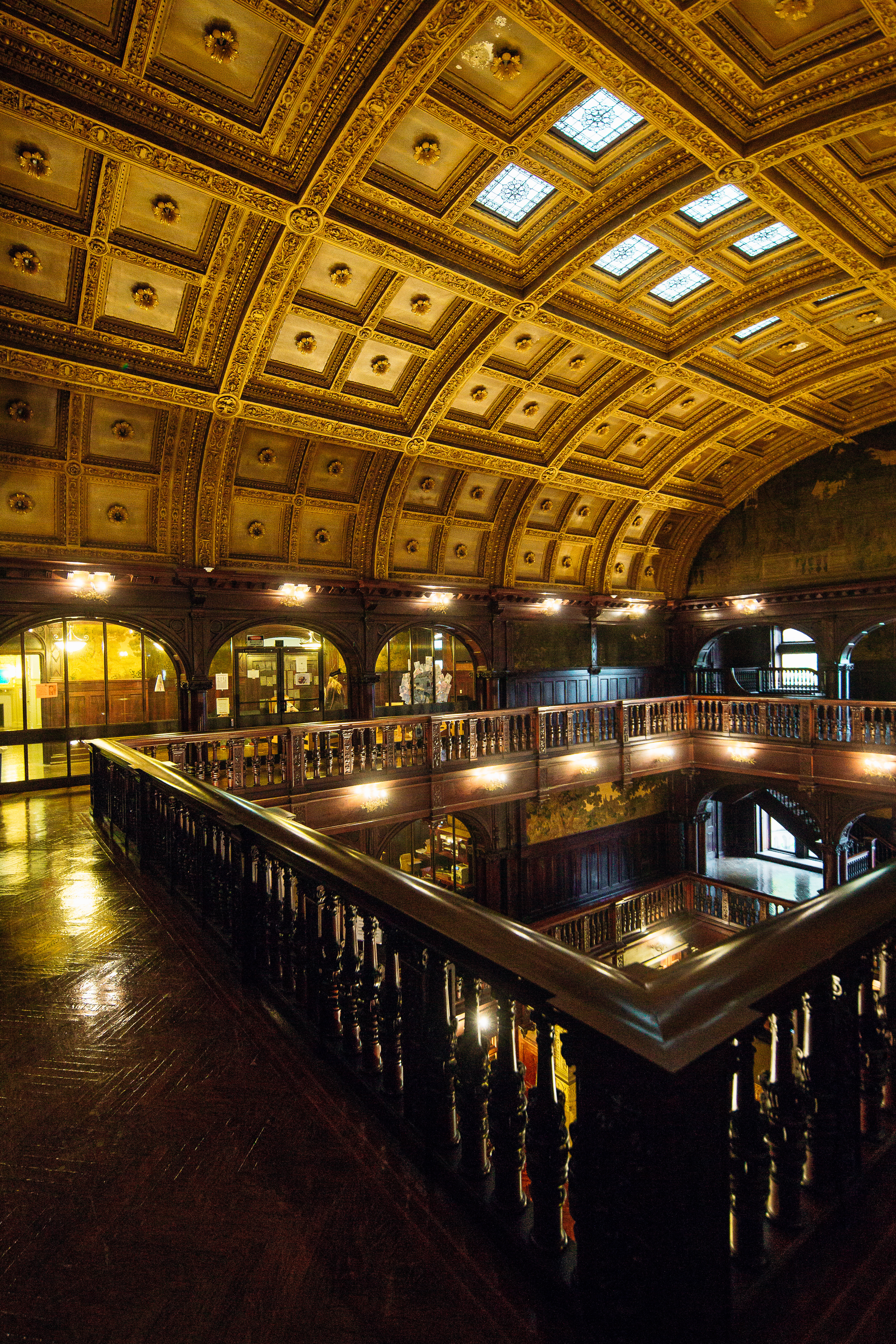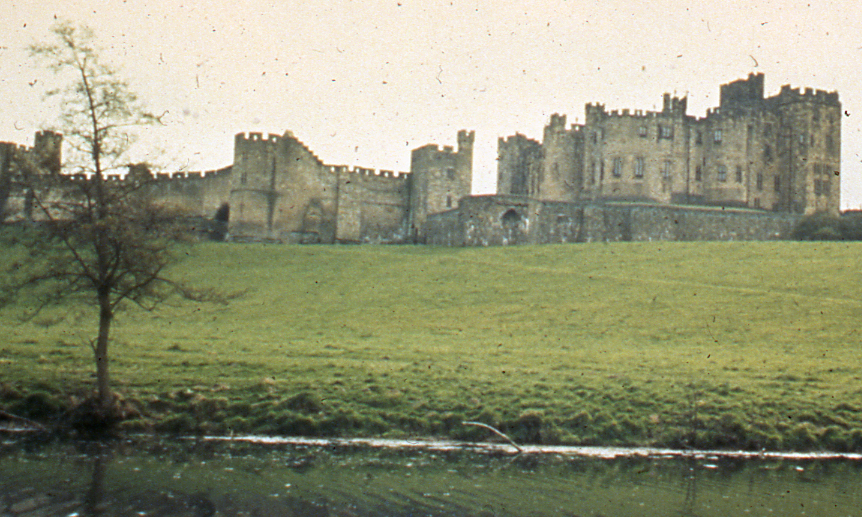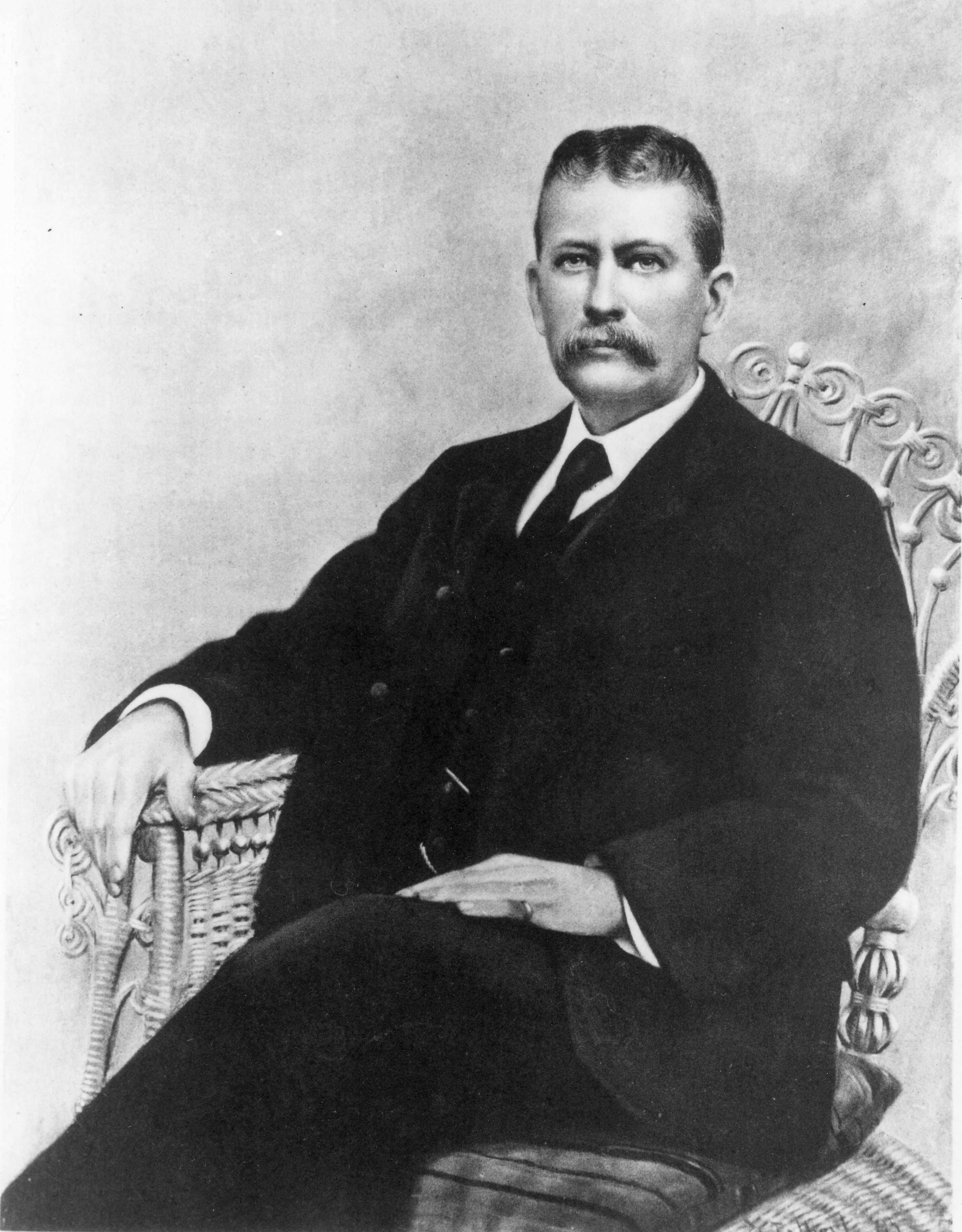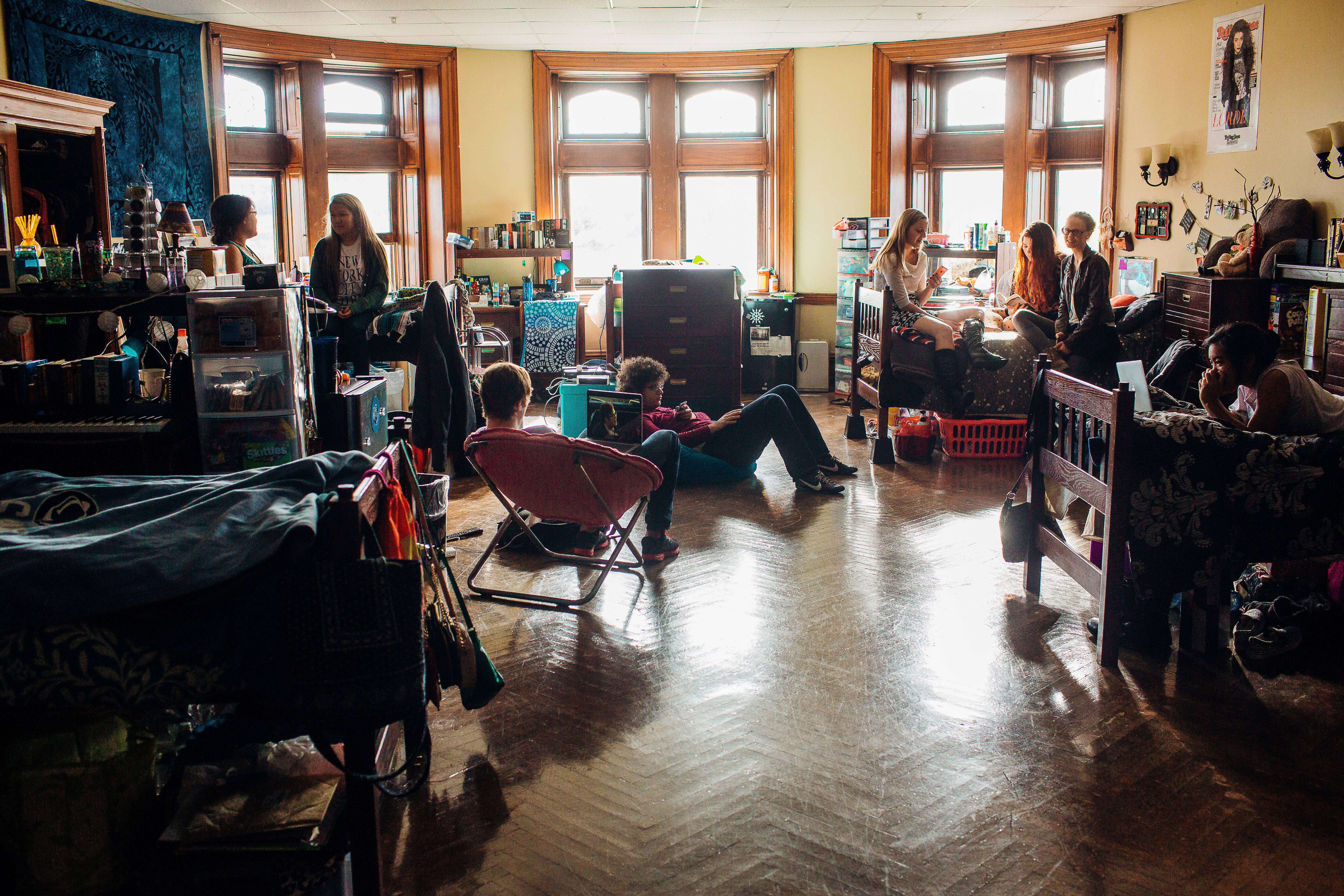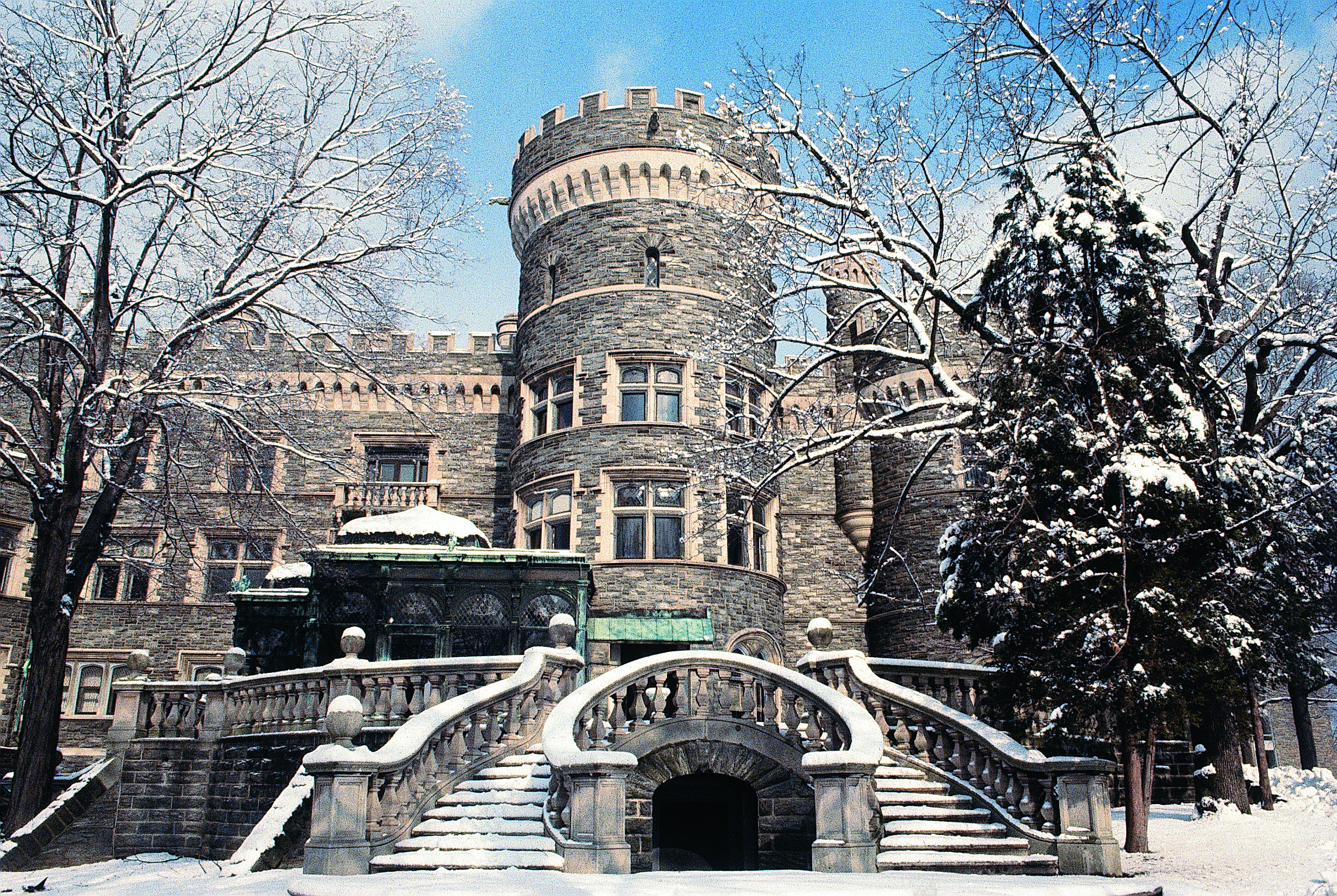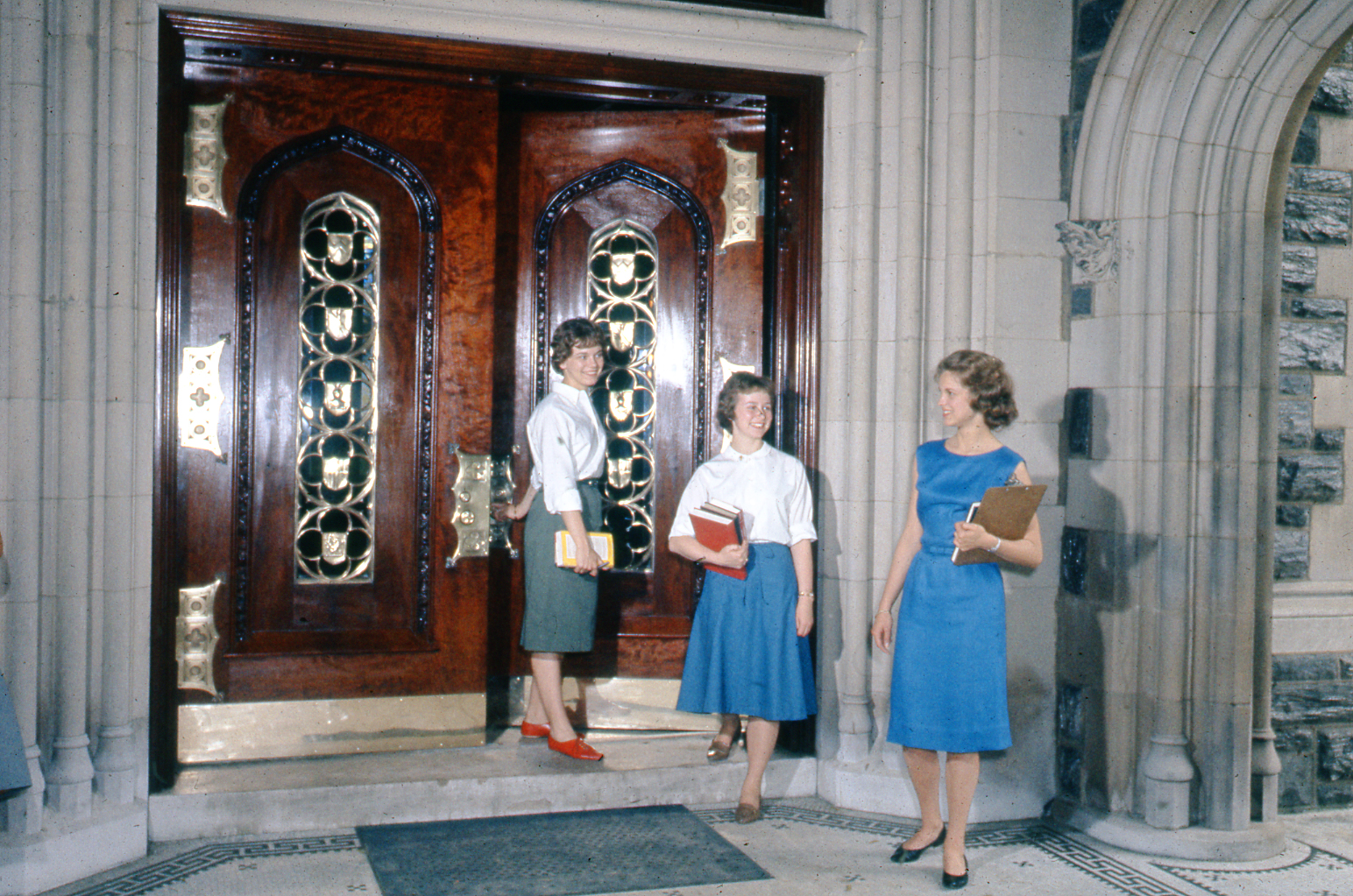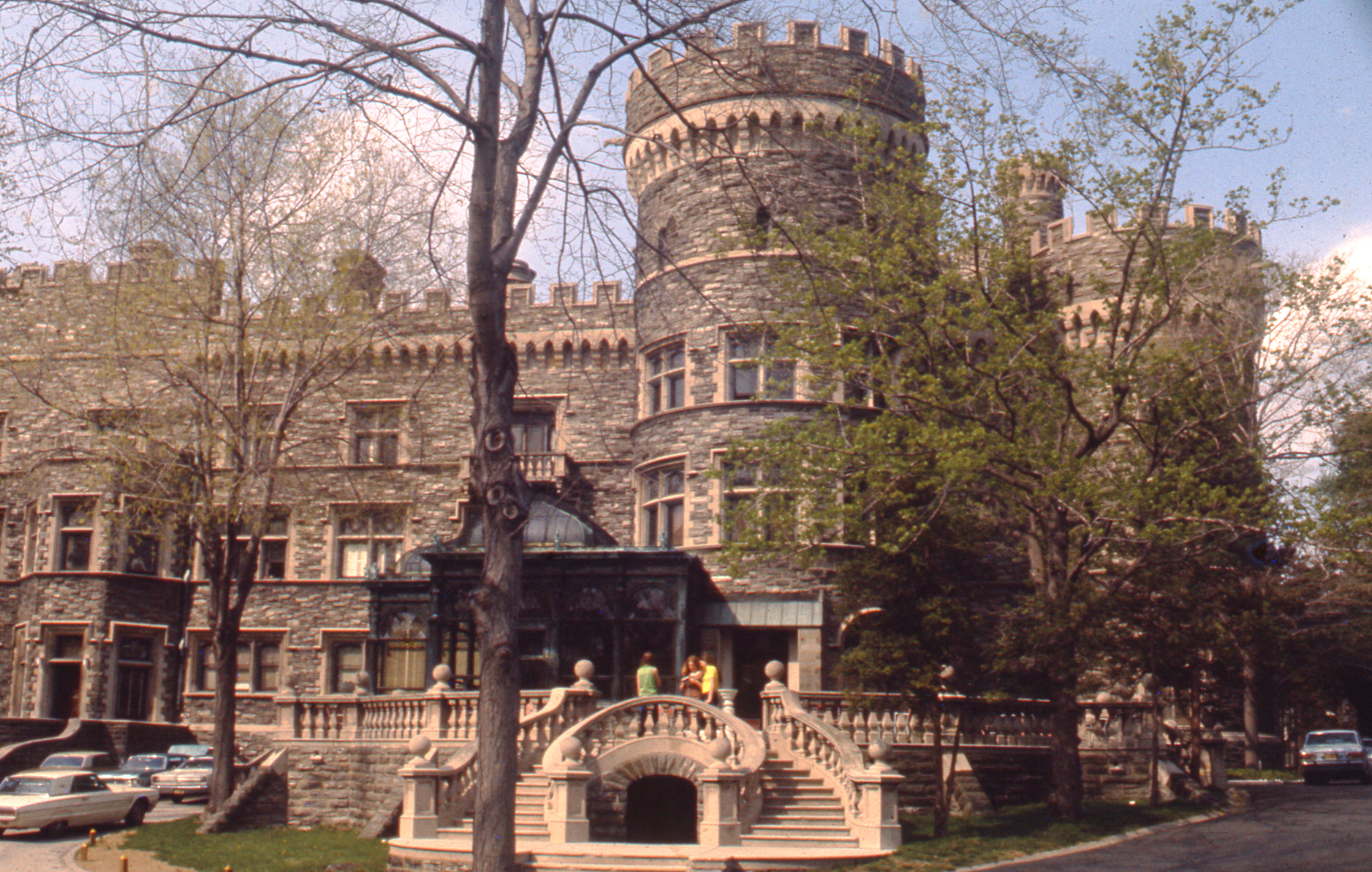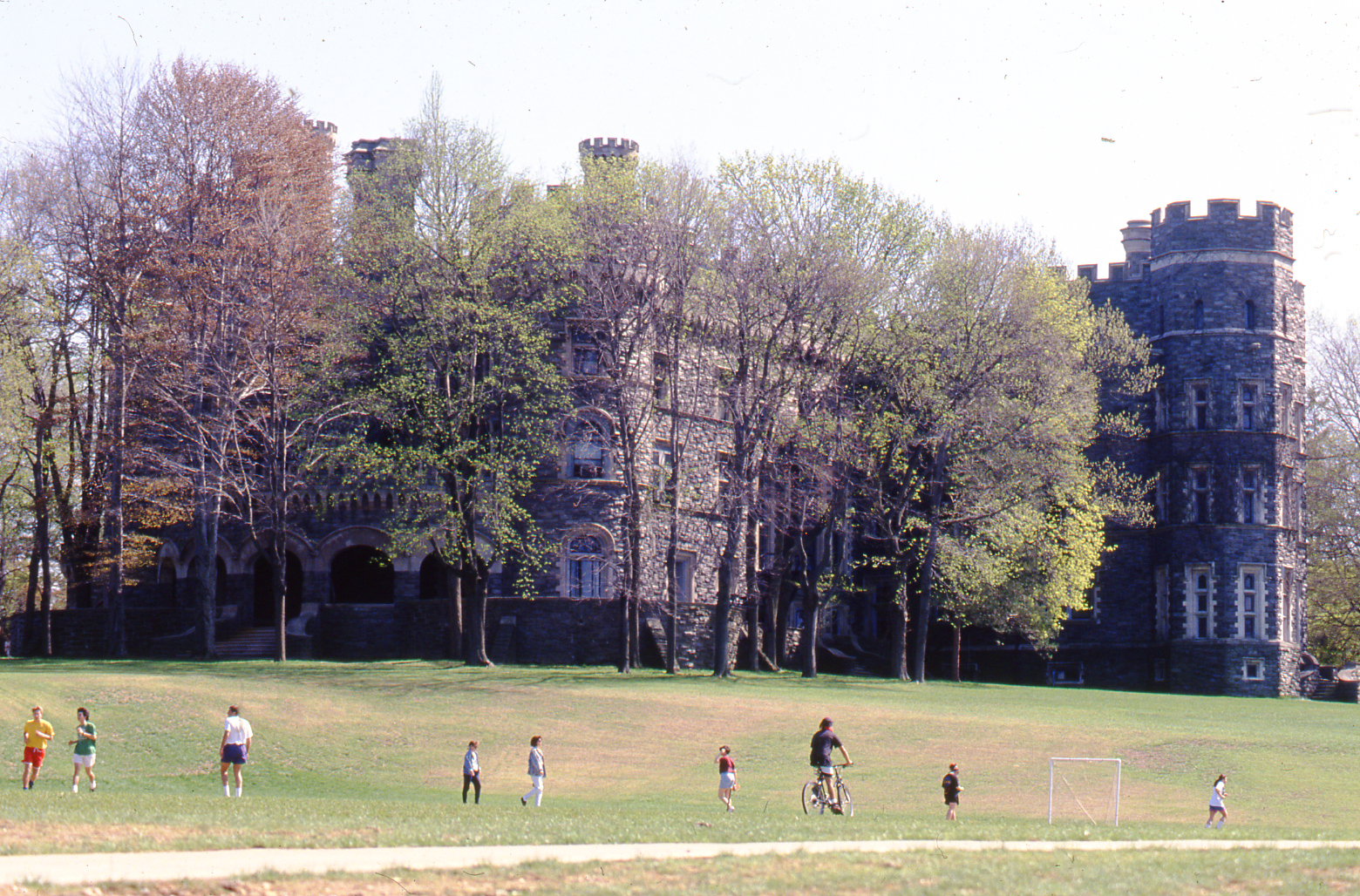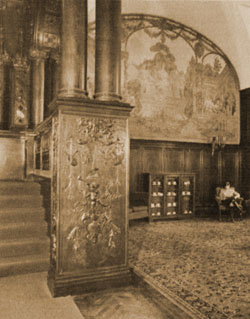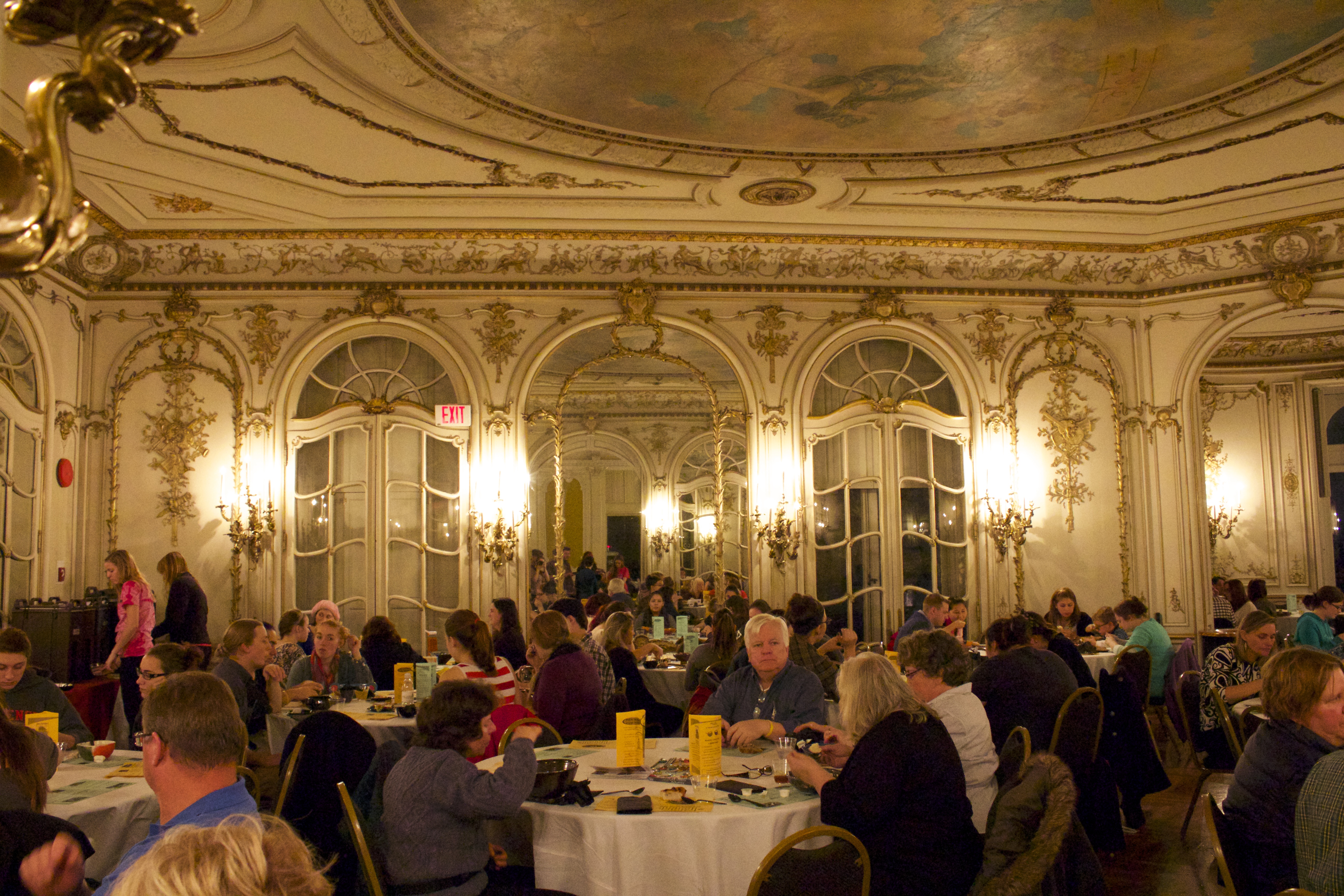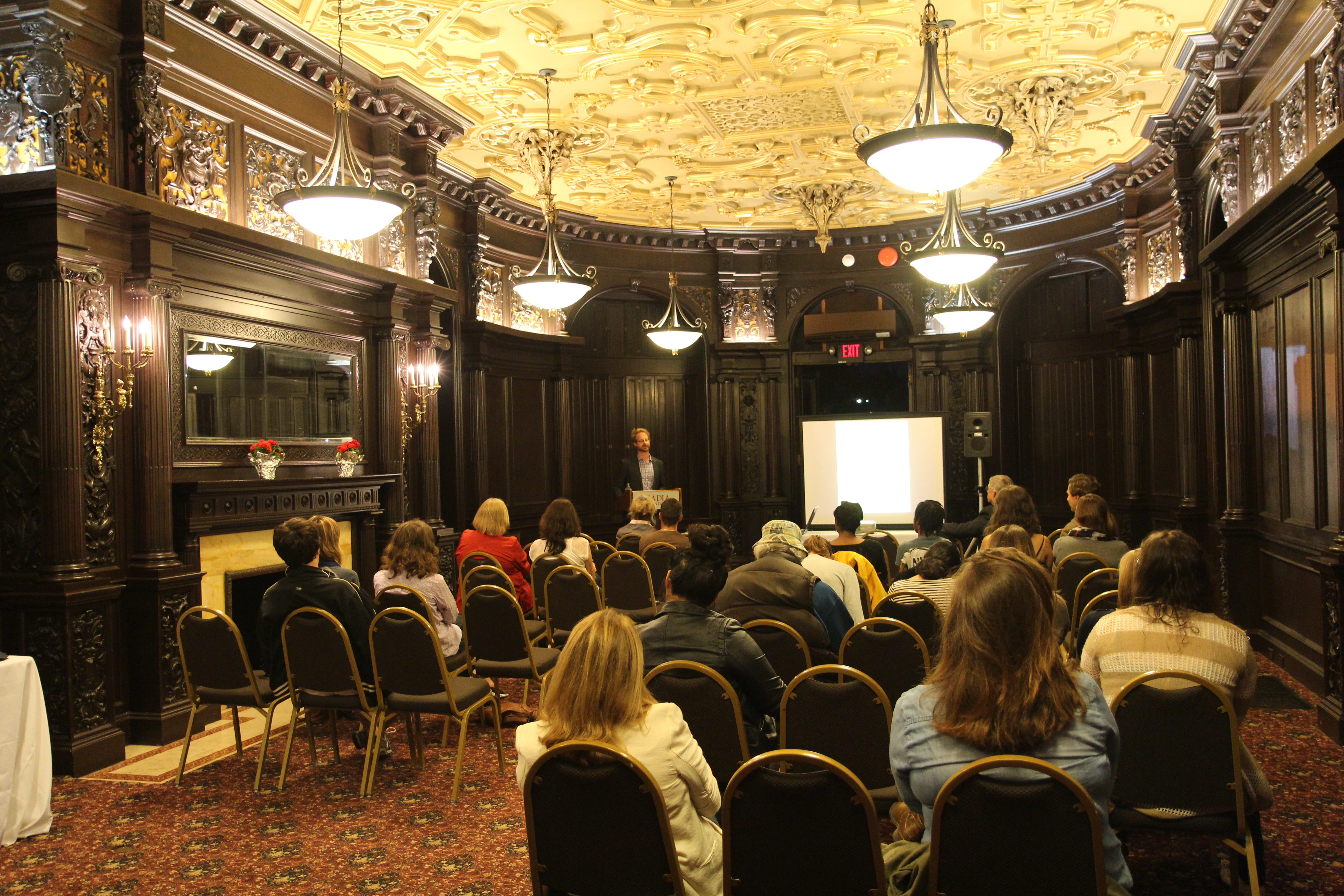The Story of Grey Towers Castle
From Chateau to Sugar
In 1881, William Welsh Harrison, the 31-year-old co-owner of the Franklin Sugar Refinery, purchased the Rosedale Hall estate in Glenside. After buying neighboring properties, he eventually acquired 138 acres. By 1891, Harrison decided to enlarge the main house, add a gatehouse, and improve the stables. For renovations, he turned to a 23-year-old architect, Horace Trumbauer, who would go on to gain renown for signature buildings such as the Philadelphia Museum of Art.
In January of 1893, a raging fire destroyed the main house of Rosedale Hall, and the family fled to the stables for refuge. Harrison called on Trumbauer to build a new home on the site of the old building. The architect planned for a grand structure inspired by, but not directly copied from Alnwick Castle, the medieval seat of the Dukes of Northumberland in England. The new residence was estimated to cost $250,000.
By the end of 1893, work on what would be called Grey Towers Castle was well underway. Greystone was quarried in nearby Chestnut Hill, and Indiana limestone was crafted into exterior trim for doors, windows, and other elements. Local craftsmen were called upon for the vast amount of hand-carved woodwork involved in the interiors. The decor of the principal rooms represented French styles dating from the Renaissance through the age of Louis XV.
Two Caen stone mantles in the central Great Hall mimic a huge Renaissance mantle in the royal Château de Blois. At Grey Towers, the mantles’ royal emblems have been replaced by fleurs-de-lis, while the central escutcheon holds the coat-of-arms of Harrison’s father. The French Renaissance influence that clearly attracted Trumbauer also appears in many of the Castle’s principal rooms.
The Library has walls lined with inset book cabinets whose original glass fronts have been replaced with wood panels. Walnut frames carved in a Renaissance style outline the cabinets and the ornamental plaster panels above. Below the ceiling cornice runs a plaster frieze molded with cupids and garlands. The original moldings and paint are still visible on the coffered ceiling.
Dining and Dancing
The Dining Room lies beyond the Library. Here, there are classical Renaissance architectural elements in the walnut columns and caryatids which frame the wooden paneling of the walls and the mantelpiece. These, along with the strapwork ceiling, are reminiscent of interiors at Fontainebleau, Napoleon’s favorite of the French royal palaces. While glass doors at the far end of the room once opened into a circular conservatory on the south terrace, its deteriorating state unfortunately led to its removal in 1952.
A corridor leading west from the Dining Room toward the former location of the kitchens and servants’ hall gives access to the Breakfast Room. The walnut paneling of the room is covered by a narrow band of tapestry woven with scenes of a hunt. Overhead, painted canvas panels fill spaces between the ceiling beams. After the Castle had been finished, the room was enlarged with the present metal-and-glass extension onto the south terrace. The windows and sills of the original Breakfast Room were removed to provide a broad opening into the addition.
Behind the main stairway of the Great Hall, a sunken landing opens through massive sliding doors into the oak-paneled Billiard Room. On the north side of the Great Hall, near the Billiard Room, a small circular entryway with a domed and gilded ceiling leads into the Mirror Room. The estate’s ballroom, this entire room was likely ordered as a package through a French firm: It was created in France and shipped to Glenside, accompanied by workers to install it. The ceiling depicts the four seasons as women, attended by cupids, floating against a sky cut by the path of the zodiac. Within the cove separating the walls from the ceiling runs a vine motif ornamented with cupids, long-necked birds, and female figures.
Elegant and Eclectic
A pair of sliding doors opens from the Ballroom into the adjoining Rose Room. Here, the ornamentation is a composite of various details typical of the later years of Louis XV’s reign. The grand stairway of the Great Hall rises to a landing where a large archway gives entrance to the Music Room. Each pier of the arch displays a single, large, mahogany panel carved with French Renaissance designs. The room’s ceiling originally was painted in Renaissance style, but only the painting in the spaces over the archway remains. Tapestries decorate the walls above the wainscoting of the Music Room. At the end opposite the fireplace is a piece depicting presumably Euterpe, the Greek Muse of Music. In the lower right corner of this tapestry is the signature, “Baumgarten 1898.”
William Baumgarten and Company Inc. of New York City provided all of the tapestries throughout the house, as well as the ornamental painting on the ceilings and walls. Judging by signatures on the tapestries and carvings, the interior decoration of Grey Towers was complete by the fall of 1898.
Harrison now owned one of America’s great castles. With its 40 rooms, it also was one of the largest homes in the country. The eclecticism so popular at the time is well represented in Grey Towers’ architecture and interior decoration. The structure brought attention to Trumbauer, who was launched on a highly successful career that lasted into the early 20th century.
Harrison died in 1927. Two years later, Beaver College, then located in Jenkintown, purchased Grey Towers from the family for $712,500. For years, classes were held in both Jenkintown and Glenside, but in 1962 the College transferred completely to the Grey Towers property. In October 1985, Grey Towers Castle was declared a National Historic Landmark, providing proper recognition of its architectural and historical significance.
In 2020, Arcadia University dedicated the Laura Minerva Korman Mirror Room in memory of former trustee Laura M. Korman ’89, ’95M.
The Castle Today
Today, Grey Towers Castle is a vital part of campus life. Select freshmen get the opportunity to spend their first year in traditional and suite-style dorms on the third floor, offering them a unique glimpse into life as the Harrisons lived it. Downstairs, the Rose and Laura Minerva Korman Mirror Rooms frequently hold lectures, book readings, panel discussions, and Senior Capstone Presentations. Annual events like Community and Civic Engagement’s Empty Bowl Dinner, as well as dances, dinners, and memory nights, also take place. The Castle is home to administrative offices and conference rooms that hold meetings for campus organizations and student groups.


